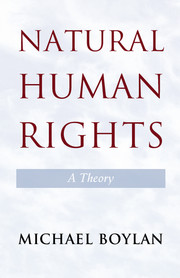Book contents
Afterword: The Politics of Change
Published online by Cambridge University Press: 05 September 2014
Summary
Our symphony began by setting out the disparate voices involved with human rights and their traditions. We then transitioned to means of justifying human rights and then proceeded according to the model of normative worldview change and short-term policy solutions particularly related to the principal concerns of the table of embeddedness: level-one basic goods, level-two basic goods, and level-one secondary goods. One needs a vision of how the theory comes-to-be in the world. This is not an easy process. One could approach such a question from the point of view of political dialogue. In Chapter 1 several promising approaches were highlighted along that line. The key ingredient in most accounts of political dialogue is the Overlap and Modification dynamic. This is connected to effecting real change in personal worldview that collectively understood will change both the common body of knowledge as well as the shared community worldview. As was argued earlier, this Overlap and Modification dynamic can take a long time. In the interim, short-term policies are needed to move us in that direction. However, it should also be emphasized that not any direction will do. This book has supported an agency approach that is based on (a) a personhood account via the personal worldview imperative; (b) the argument for the moral status of basic goods (this makes the theory a natural theory of human rights); and (c) the table of embeddedness (based on a hierarchical ranking of goods necessary for human agency) that lays out a pattern for political triage in policymaking. In the process of change all three elements must work together.
- Type
- Chapter
- Information
- Natural Human RightsA Theory, pp. 263 - 266Publisher: Cambridge University PressPrint publication year: 2014

